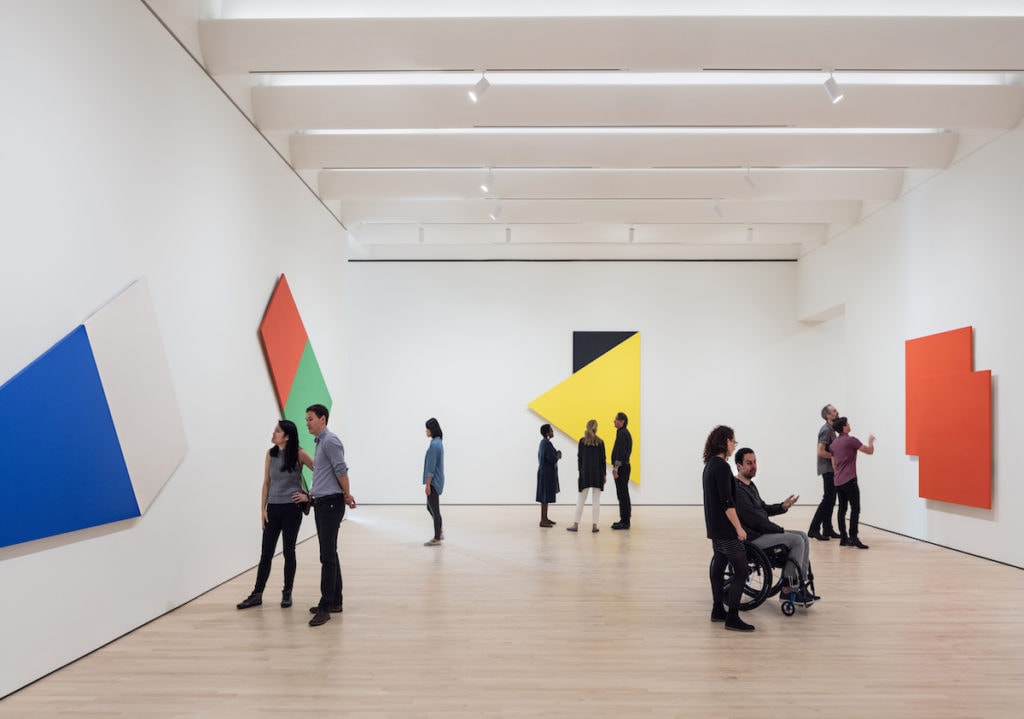Prior to taking Christopher Day’s Modern Art class, I had always thought that art can be anything; that it is a way for anyone to express themselves. That was until he showed the class a video titled “Why is Modern Art So Bad?” by Robert Florczak of Prager University. While the video contains some rather over the top and heavily opinionated rants, I found there to be quite a bit of truth behind his argument because like it or not, art has changed, and it’s changed a lot.
As an art major myself, I have developed a tremendous passion for the arts and have respect for all of its forms, so I would just like to make one thing clear: I believe that all art is important. That being said, however, I do believe that some should be more heavily valued than others; enter Florczak and modern art.
Up until around 100 years ago, when someone thought of art, they thought of “The Mona Lisa.” They thought of “The Statue of David.” They thought of the “classics,” because quite frankly, that’s what they were: classic. In Florczak’s words, those pieces “inspired, uplifted and deepened us.”
For hundreds of years, art was viewed as a treasure and only the best of the best were allowed to make it. But now?
Now, we walk into the San Francisco Museum of Modern Art and see a room full of about half a dozen or so solidly colored two-dimensional shapes that sell for millions of dollars. Meanwhile artists making beautifully crafted hyper-realistic pieces are working another job outside of the art world just to make ends meet because art collectors would rather drop $15 million on a solid white painting by Robert Ryman. Good for you Robert, but the last time any of the rest of us turned in a blank paper we got it returned with a giant red “0” on top of it and a scolding from our teacher for not doing the assignment.
Now obviously I don’t know him and I certainly don’t know Ryman’s motive behind the piece. It could very well be a strong representation of something much deeper and personal to him and that’s perfectly fine, because that’s what art is about, representing something bigger and creating things that sometimes words cannot describe. I get that, trust me I do, but should we really be talking about a $15 million price tag for it?

To me, that’s absolutely ludicrous and quite frankly, without knowing the story behind any of these “modern” pieces, it’s lazy and insulting to artists like Van Gogh or Michelangelo who spent who knows how many hours on just one small section of a much larger piece. They didn’t have this “modern” luxury of slapping their favorite color on a canvas and calling it done. They didn’t have the internet or cameras or programs like Photoshop that make creating beautiful pieces so much quicker and even better than the original. Today, if a mistake is made, all someone has to do is click the “undo” button, whereas those who created such “classic” pieces would’ve been forced to restart.
Don’t get me wrong, I love technology and even some of the pieces I’ve seen from students here are insanely impressive, but there’s just something about that “old” and “traditional” art that is special. It wasn’t just a hobby or a job. It was their entire lives. The process was so much more intimate and personal. The art was real. But just like all things, whether you believe it was for the better or for worse, it’s changing, and if society doesn’t begin to appreciate the intricacy and treasure of real and traditional art, it won’t just be changing, it will die along with the last great artists. This doesn’t mean art isn’t important unless it looks like “The Last Supper” or includes a fair-skinned nude woman. This doesn’t mean that “modern” art can’t inspire people and be just as beautiful or that it’s not “real” art. It just means that when it comes to value—both monetarily and socially—maybe we should prioritize what’s worth millions and museum-worthy and what’s not.
Photo Credits:
- Chiamonwu Joy, A Nigerian Female Hyper-realistic Charcoal Artist. @ChiamonwuJoyArt
- Approaching American Abstraction The Fisher Collection exhibition; photo © Henrik Kam, courtesy SFMOMA (http://adobeairstream.com/art/sfmoma-cruise-ship-makes-port-trophies-aboard/)

